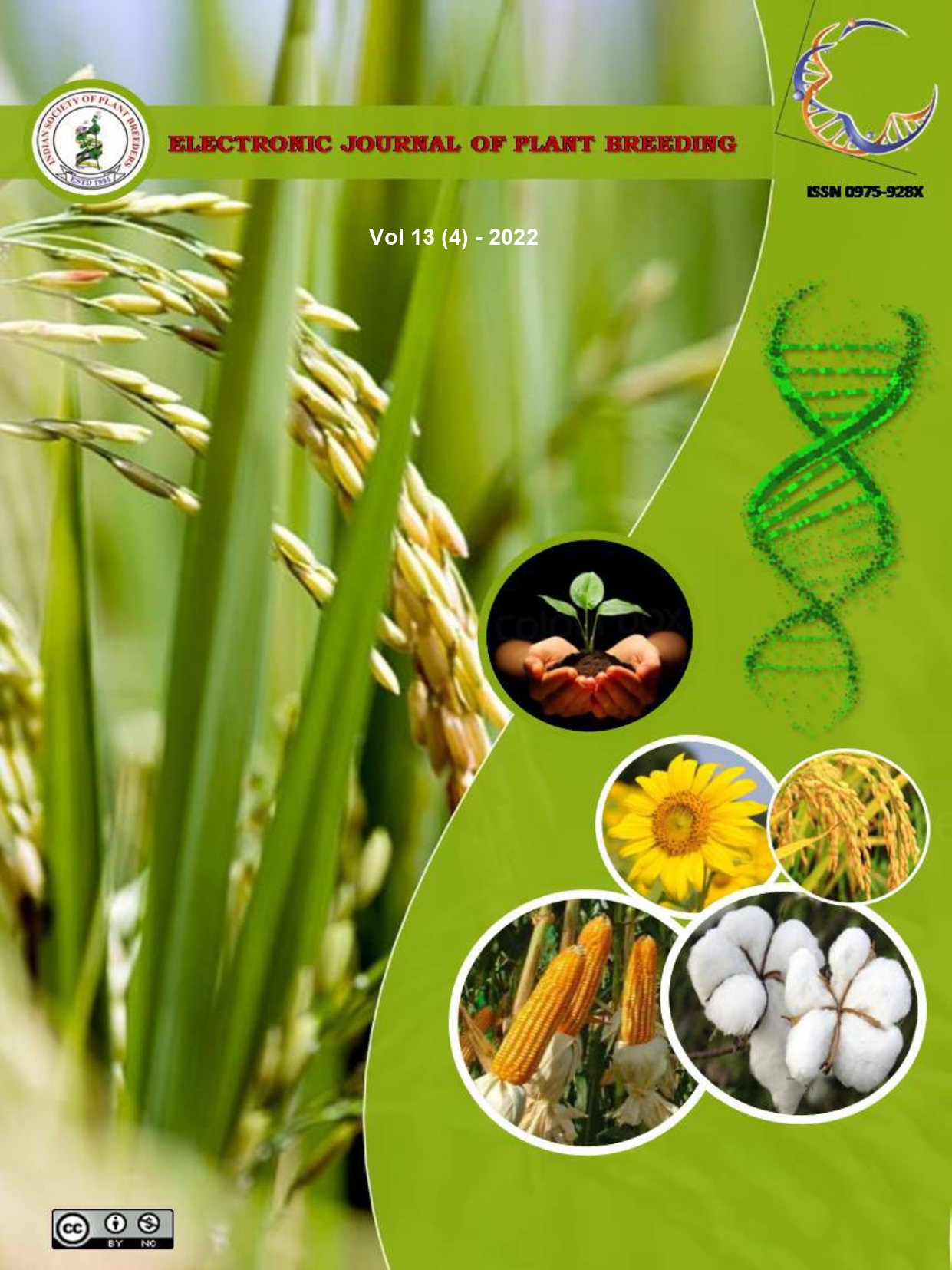Principal component analysis of yield and quality traits in Zinc rich landraces of rice (Oryza sativa L.)
Abstract
Principal Component Analysis (PCA) was carried out to find the genetic divergence among 35 zinc-rich landraces of rice along with two checks for yield and quality traits. Three principal components with Eigen value more than one explained maximum variation with a total contribution of 78.33 per cent of the total variability. Principal Component 1 (PC 1) contributed a maximum of 51.71 per cent, while PC 2 contributed to 18.71 per cent and PC 3 contributed to 7.96 per cent towards the total variability. Yield and quality traits such as days to 50 per cent flowering, number of productive tillers plant-1, grain yield plant-1, head rice recovery per cent, iron content and volume expansion ratio explained the maximum variance in PC 1. The results of the 2D scatter diagram revealed GM-120 and GM-173 landraces to be the most diverse. These genotypes were identified to be high yielding and nutritionally rich, compared to BPT 5204. Hybridization of these genotypes is expected to result in desirable transgressive segregants for yield, quality and nutritional traits

